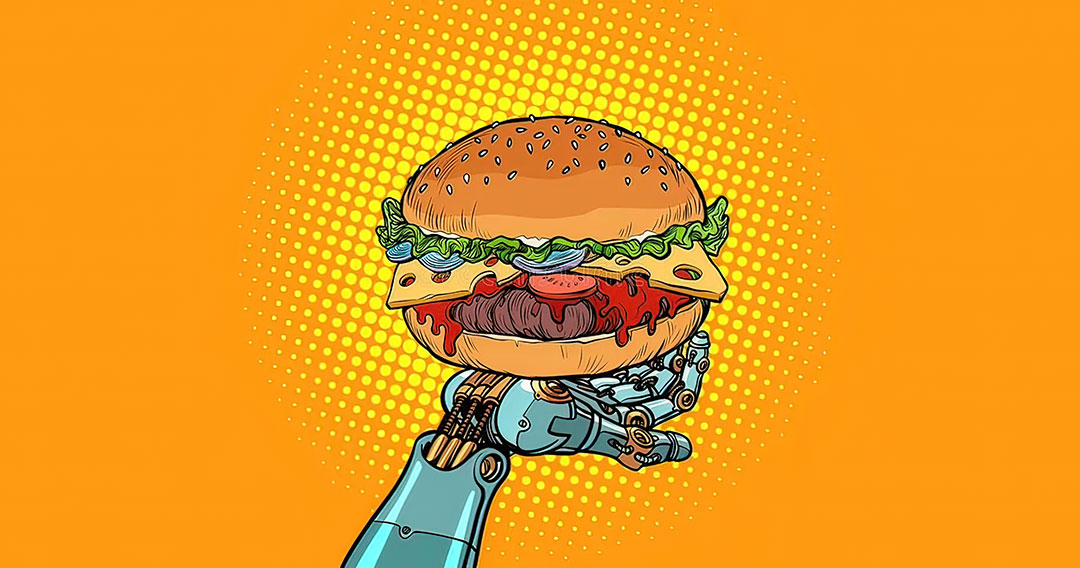McDonald’s enters the age of robotization
In the U.S. state of Texas, the multinational fast food chain McDonald’s opened a store where costumers have no direct contact with any other human being. This development raises—once again—the issue of the consequences that technological revolutions have on employment.
Daniel Gatti
27 | 01 | 2023

Photo: EPU
The store, located in Forth Worth, a city of almost one million inhabitants in the central-northern region of the state, is one of the smallest outlets the chain has in the United States and it only operates as a take-out station.
Costumers type in and pay for their orders on a screen and minutes later their meal is delivered via a conveyor belt onto a pickup window.
The store also has spaces for delivery persons, but little more than that. Nobody can sit down and eat there. There is no other store like it in the planet.
At McDonald’s everyone is thrilled. “The restaurant is the latest move in the ‘Accelerating the Arches’ growth strategy, which is working on innovation to improve customer experiences,” the multinational chain announced in a press release.
Max Carmona, senior director of global design and restaurant development, stated that the company is “seeking new ways to serve customers faster and easier” and spoke of “an experience that is here to stay if everything goes as it has thus far.”
In most of the more industrialized countries, the restaurant industry is among the sectors that are undergoing the greatest changes due to the introduction of new technologies.
According to a 2021 study by the specialized site Twisted, quoted by the Argentine magazine Planeta Urbano, robots are rapidly gaining ground in restaurants, especially in the fast food industry.
Among others, the magazine cites the case of Flippy, a robot developed by the company Miso Robotics, which in 100 locations of the U.S. chain White Castle increases the speed of production by 10 to 20 percent.
Flippy “fries 80 baskets of food in an hour,” it can flip burgers on a grill, and even “cleans up its own mess,” the article says.
Mike Bell, CEO of Miso Robotics, sees it as a win-win situation: the robot performs all the more tedious tasks, “allowing staff to focus on preparing, cooking, and packing orders more safely and precisely while spending less time attending to the deep fryer.”
The article describes other highly automated restaurants and bars, such as Mezli, in San Francisco, that can “make 300 meals before needing any human intervention,” or restaurants in the Netherlands and Finland, where a robotic bartender called Makr Shakr prepares all kinds of drinks by itself “following recipes of international bartenders.”
Another prominent case is that of The Kitchen, a cooking robot invented in Great Britain that has 5,000 preloaded recipes.
According to Twisted, the global robotics market is expected to expand at an annual growth rate of more than 17 percent until 2025. That growth will be concentrated in Europe, the United States, and some countries in Asia.
Almost half of the robots currently operating in the food industry are in Europe, with the largest numbers found in Germany and Italy.
On that continent, the density of robots per 10,000 workers went from 62 in 2013 to 84 in 2017 and is expected to reach over 100 in 2023.
It should be noted that this new initiative by McDonald’s is not exactly an original idea of the corporation: in China this same kind of fast food stores have been operating for years, and are even more automated, with robots acting as waiters and serving patrons.
Halting what business operators and developers call “technological progress” does not seem viable. It is not part of the logic of capitalism and there is no other logic in the world today that opposes it.
“A technological revolution causes changes in many aspects; in particular it entails a major leap in productivity (a key factor that explains the generalization of its application, particularly in capitalism), improving the competitiveness of companies and, at the same time, making productive processes based on the previous technology unfeasible,” Juan Manuel Rodríguez, a Uruguayan economist, writes in an essay on the subject.
In an article published in November 2022 in the Uruguayan daily newspaper la diaria, Rodríguez who is also a university professor and former advisor to Uruguay’s trade union federation (the only one in the country), observes that such “changes modify work and reduce employment, particularly in sectors that become non-competitive.”
However, he notes that when these “revolutions” occur, at very least the triggering of mechanisms such as collective bargaining is necessary in order to minimize the consequences and affect as little as possible the level of employment.
“Technological transformations have historically been accompanied by the construction of new institutions and social agreements,” he adds, but notes that that is not the dominant trend in a world where “collective bargaining is declining” and “many wonder what it will take for it to be reinstated.”
